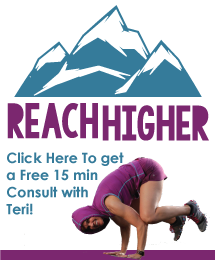If you’re over 40 chances are you’re experiencing lack of energy and you may even notice negative changes to your body. But don’t worry because a good fitness program can help you with both of those things and one of the best exercises to get into is a Yoga class.
When you start Yoga, knowing where to start can be a bit baffling. As a novice, you’ll have to form the strength, balance, alignment and flexibility to move onward to more difficult poses. Your Yoga routine should consist of poses from all the important groups of Yoga poses: twists, standing, backbends, inversions and forward bends.
Mountain
This is the core pose of your Yoga exercise. Once you have developed the alignment in the Mountain, it will transfer to all the other poses you try to do—even when you’ve made it to the more sophisticated levels. Along with aligning your body the right way, you will be able to balance your body weight evenly among both feet which will stabilize you in later balances.
Tree
This pose is one of the initial balances you may practice. The Tree pose is done by balancing on only one foot and making your body longer to create space up and down your spine. There are some slight improvements of the Tree that consists of slacking your shoulders and spreading your groin which will help avoid injury when you come to the progressive poses.
Lunges
A lot of the poses in Yoga for a novice are standing positions that will help increase the strength of your body’s stability and core. In a High Lunge, the back knee is raised which spreads the hamstrings. The Low Lunge will work your quadriceps—the big muscle group in the thighs—and, at the same time, it stretches your hip flexors.
Cobra
Cobra is a backbend that can build up your back muscles so your general posture will become better, will spread your shoulders and chest and gives you more energy. Cobra is a great pose to help counterbalance those many hours you may spend hunching over a computer.
Triangle
This pose adds many components in one position. The Triangle pose spreads your torso out in four different directions, heightens your balance, frees your shoulders and chest, creates leg strength and still gives you a slight twist.
Downward Facing Dog
This, too, is a pose that has more than one function. The Downward Facing Dog is one from the inversion group meaning that your head is below your heart. There are also a few other benefits to this pose: it strengthens your upper body, you get a forward bend, a slight backbend and a shoulder opener.
Reclining Twist
Normally, twists stimulate and ring out your inner organs, especially the digestive system organs. The Reclining Twist will work great for those that are new to Yoga because you’ll let the floor be your guide to maintain your hips and shoulders are in the proper alignment.
Seated Forward Bend
A Seated Forward Bend is the opposite of a backbend in that it has a peaceful effect on the nervous system. Since your body is folded over, you can block out all the noise that’s going on around you and concentrate on your inner self. From the physical aspect, your spine and hamstrings grow longer and this pose, though it can be intense, is a great comfort to your lower back.
Bound Angle and Corpse
Sitting in a Bound Angle, you’ll feel a release in your inner thighs and groin. The variation for this pose is that you fold forward which gives you the additional benefit of cooling your energy and releasing your spine. This leads you into the Corpse pose. The Corpse lets you go into a state of profound relaxation and ends your Yoga exercise.
You should practice these poses but be careful not to drain yourself of energy and, as a beginner, you’ll need to rest between the poses. A very important thing to start with is make sure you understand self-discipline. Yoga isn’t just about exercising and performing the poses, it’s a method to get your body and mind in balance.
Latest posts by TeriWalker (see all)
- Top 10 Fitness Apps That Will Really Give You Results (Part II) - August 28, 2014
- Top 10 Fitness Apps That Will Really Give You Results (Part I) - August 21, 2014
- Eat Healthy Food for a Healthier You - August 14, 2014


